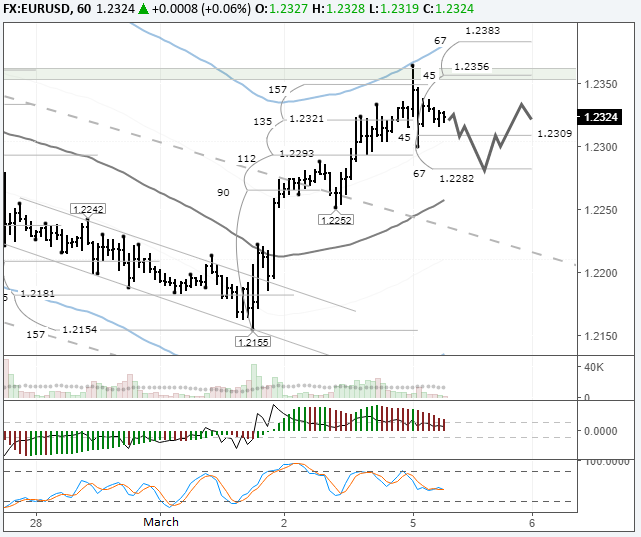Previous:
On Thursday the 1st of March, trading on the EURUSD currency pair once again closed up. The dollar remained under pressure from the introduction of steel and aluminium tariffs. The US’s trading partners have stated that they may in turn implement their own protective countermeasures.
Trump responded with a tweet, saying “When a country (USA) is losing many billions of dollars on trade with virtually every country it does business with, trade wars are good, and easy to win.”.
After Trump’s latest announcements, the dollar continued to lose ground against all the majors.
Economic statistics:
Canada: GDP (Dec): 0.1% (forecast: 0.1%, previous: 0.4%), (Q4): 0.4% (previous: 0.4%).
USA: Michigan consumer sentiment index: 99.7 (forecast: 99.5, previous: 95.7).
Day’s news (GMT+3):

Fig 1. EURUSD hourly chart. Source: TradingView
My expectations on Friday of an increase on our main pair came to pass. The rate recovered from 1.2155 to the 135th degree.
Today, as markets opened, the EURUSD pair tested the 157th degree and the U3 line. This little bull run was most likely the market’s response to the vote in Germany. The Social Democratic Party of Germany has voted in favour of another coalition deal with Angela Merkel’s Christian Democrats. Now, the Bundestag will vote on Merkel’s appointment to the post of Chancellor on the 14th of March.
The euro has since dropped from 1.2365 to 1.2300. This was induced by the results of the Italian elections, where no one party won a parliamentary majority.











Leave A Comment